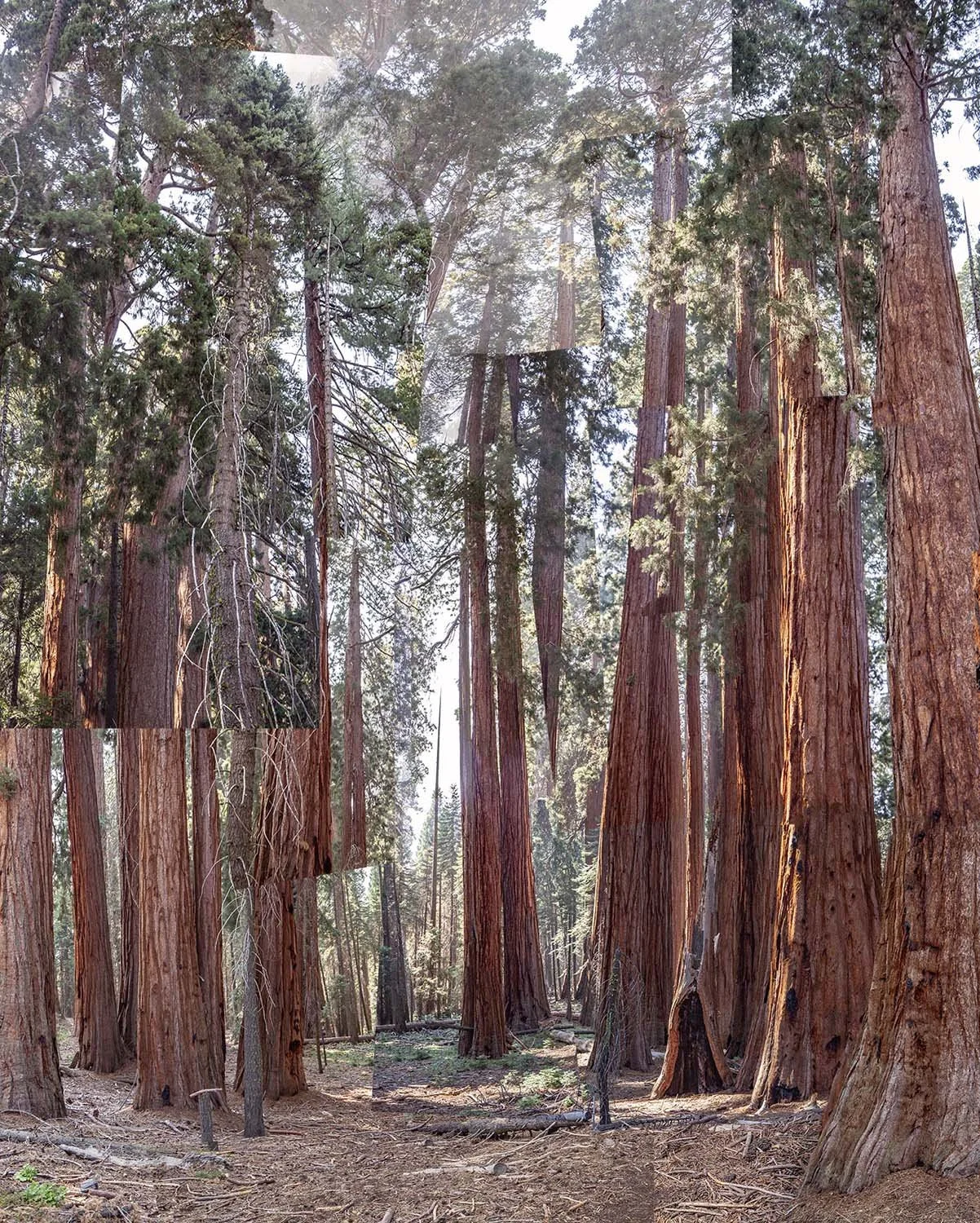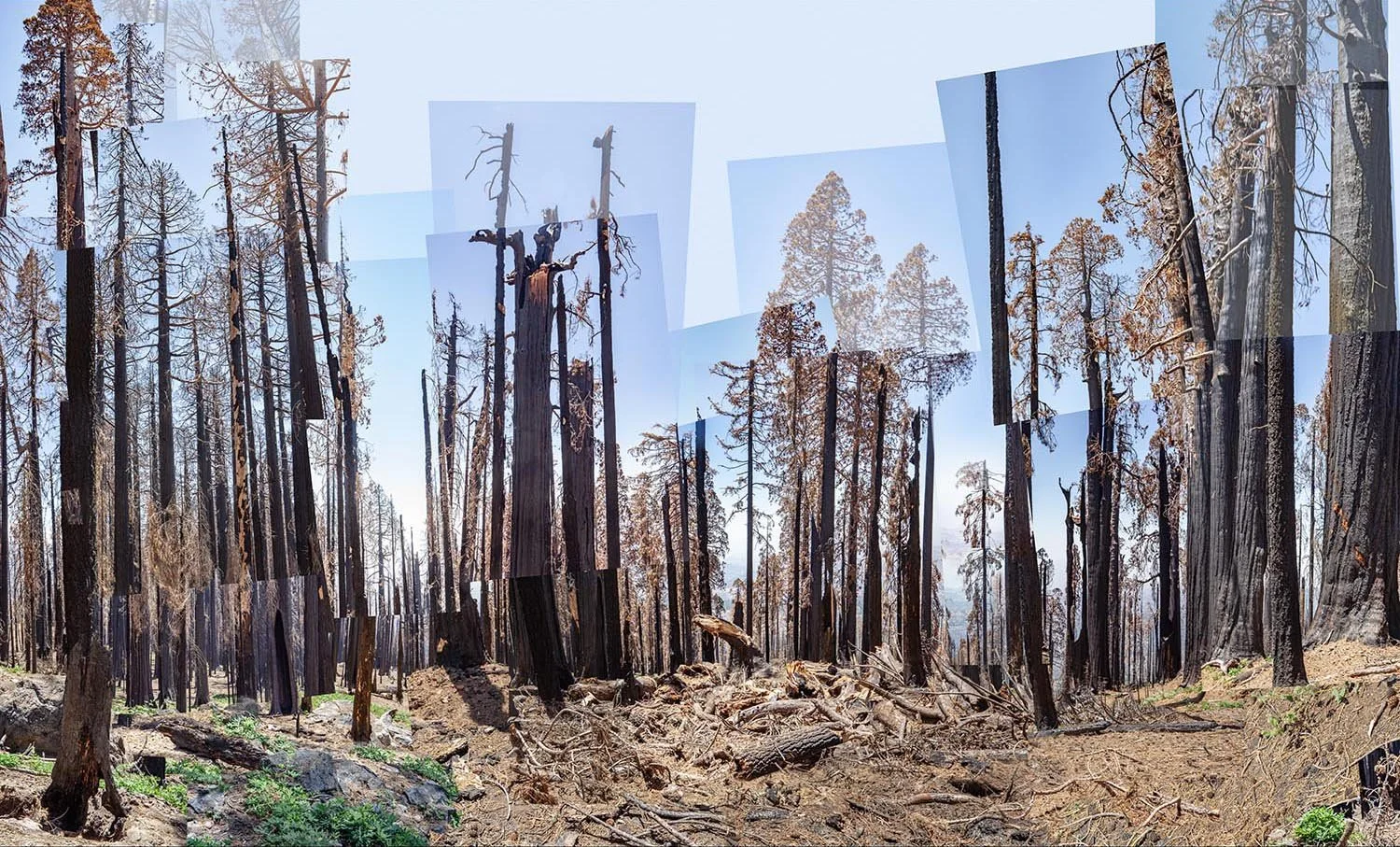Sequoia seedlings are asking for a thousand-year commitment.
How can we nurture the new generation for the next millennium?
The survival of sequoias is interdependent with the flourishing of all life. A healthy forest stores carbon and generates rain. As temperatures rise, trees require more water and may store less carbon, impacting forests worldwide. All life is interconnected. Caring for sequoia seedlings requires caring for all life forms.
CARE FOR THE EARTH
Adopt regenerative agricultural methods that restore the underground networks of roots, fungi, and bacteria:
Regenerative Agriculture:
My first inspiration, written in 2021 after walking in the McIntyre Grove after the KNP complex fire, marveling in the thousands of tiny sequoia seedlings at my feet, while contemplating the Central Valley, the breadbasket of the US that lies below the mountains:
To nurture the seedlings we must nurture the earth, repair the life web.
We must refrain from clear-cutting or cutting the remaining old growth to preserve the integrity of ecosystems above and below ground.
We must care for those areas that have been clear cut or transformed into tree farms, committing to restoring watersheds and bringing back the full diversity of the forest.
We must care also for the sterile orchards of the Central Valley, the rich agricultural lands that lie below the groves of sequoias in the mountains.
We must think like a sequoia seedling, think in tree time.
Instead of using up arable soil in the next fifty years, we must commit to nurturing the soil for the next thousand years.
Instead of continuing to extract carbon and burning it in the atmosphere, we must increase carbon sequestration in healthy soils.
Instead of poisoning the earth and waterways with pesticides and fertilizers and rupturing the soil fabric with periodic tilling, releasing more greenhouse gases into the atmosphere, we must enrich the soil with compost, mulch and a variety of ground cover plants that increase soil carbon sequestration.
Instead of sterile monocultures, intercropping trees with a variety of plants will slow each to contribute to the complex whole, adding minerals, fixing nitrogen, improving soil compositioon, and providing habitats for the natural enemies of pests.
Instead of draining all arable land, restoring wetlands, such as portions of Tulare Lake, which refilled after the floods of 2023, and was once the largest lake west of the Mississippi, would greatly lower surrounding temperatures.
These practices are adaptable throughout the world.
Let us nurture these tiny seedlings.
Let us care for them for the next thousand years.
Preserving Forests, Reforestation, Afforestation:
Forests create their own climates. The water vapor transpired by sequoias and other trees through their leaves and needles rises to the sky and produces rain. Inland forests create areas of low pressure that draw rain clouds into the interior of continents. Trees release volatile compounds that act as condensation nuclei and increase cloud formation. When forests are cut down, near surface wind speeds increase, temperatures of the earth rise, and precipitation declines.
CARE FOR THE WATERWAYS
Treat watersheds and water tables not as dumping grounds but as cherished living systems.
The fires of 2021 and 2022, were followed, as is so often the case by catastrophic flooding, which reformed Lake Tulare in the Central Valley below. Lake Tulare, which was once the largest lake in the United States west of the Mississippi River, was completely drained by early in the twentieth century. Large bodies of water reflect heat, resulting in temperatures roughly 15 degrees F (about 8 C) then the surrounding land. As waterways shrink, temperatures rise. As water tables are lowered, less trees can survive.
CARE FOR THE ATMOSPHERE
Embrace the energy of sunlight and wind. Refrain from discharging greenhouse gases.
Refraining from burning fossil fuels is not enough to halt the rising of temperatures. Nitrogen oxides used in fertilizer is three hundred times as powerful a greenhouse gas than carbon dioxide! Half the world’s food is produced using synthetic fertilizer, much of which is used to feed cattle. Therefore regenerative agriculture and shifting to a plant-based diet are essential to lowering greenhouse gas emissions.
Charismatic trees, sequoias have been planted around the world, even as they are dying in their homeland in the Sierra Nevada Mountains. Sequoias can be seen as sentinels. As the most massive and one of the tallest trees on earth, they stand like guards over the forest. As one of the most robust and long-lived of trees, when they are suffering, it is an indicator that the entire forest is at risk.
Share your thoughts here: Sequoia Sentinels Call for A Thousand Year Commitment: Seven Contemplations
Artist Statement for The Ecology of Freedom
For over a decade I have been walking with trees, grieving with the dead ravaged by urbanization, globalization in the form of introduced species, and climate change in all its guises including drought, beetles, and fire. I met the sequoias pictured here only a year before they were ravaged by huge conflagrations that not only cleared the ground, like fires of the past, but burned up into their crowns, killing mature trees like never before.
Fires bring horrendous losses but also new possibilities. In many places scorched by fire, the earth is now covered with sequoias seedlings, especially in severely burned areas. Sequoia’s seeds are adapted to sprout after fire. Their serotinous cones hang on the trees for years until the heat from flames melts the resin, causing the cones to open and drop seeds that germinate in the fertile ash of the cleared ground.
Sequoias, who can live for up to three millennia, challenge us to think in their time frames. While thirteen to nineteen percent of all sequoias living in their native habitat were killed in two years, young seedlings are growing in their stead, offering the promise of a new generation. Can we commit to nurturing these seedlings for the next millennia or more? Now is the time to ask how humanity can regenerate living systems, how we can change the ways that we live, from agricultural, to economic, and cultural practices, to give back to the earth more than we take, so that the sequoias and all living beings may flourish long into the future.
For more information:
“Reseeding the Future,” Seedbroadcast agri-Cultural Journal #21, 2024.


